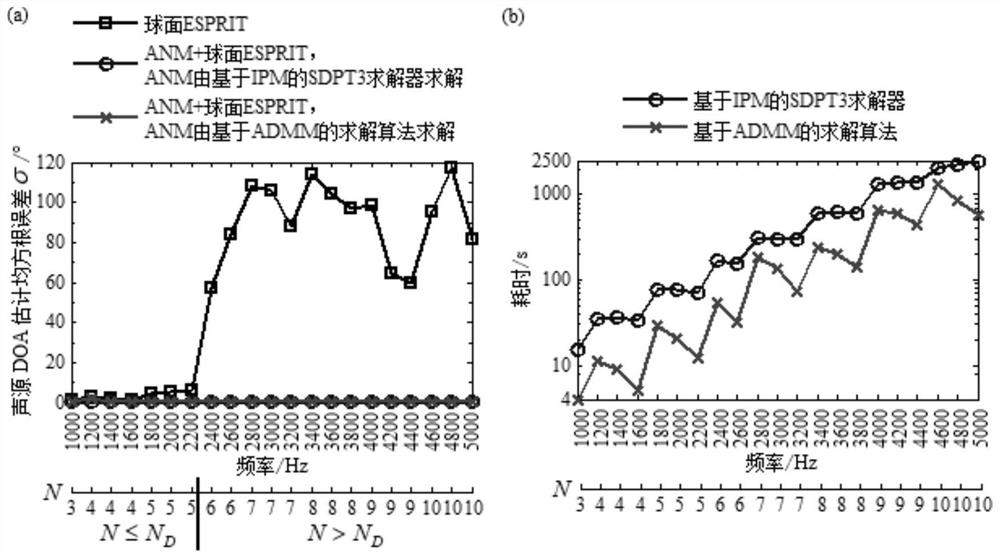Spherical array sound source direction-of-arrival estimation method based on atomic norm
A direction of arrival estimation, spherical array technology, applied to systems for determining direction or offset, direction finders using ultrasonic/sonic/infrasonic waves, etc., can solve problems such as failure
- Summary
- Abstract
- Description
- Claims
- Application Information
AI Technical Summary
Problems solved by technology
Method used
Image
Examples
Embodiment 1
[0190] see Figure 1 to Figure 9 , a direction-of-arrival estimation method for a spherical array sound source based on the atomic norm, including the following steps:
[0191] 1) Build a spherical microphone array composed of Q microphones 2 . The center of the spherical microphone array is recorded as the coordinate origin. Among them, the position of the qth microphone is recorded as (a,Ω Mq ). a is the array radius, q=1,2,...,Q. Ω=(θ,φ) represents any direction in the three-dimensional space where the spherical microphone array is located. θ∈[0°,180°] is the elevation angle, φ∈[0°,360°) is the azimuth angle. attached figure 1 "●" and "○" represent the microphone and the sound source respectively.
[0192] represents the set of real numbers, represents the set of positive real numbers, Represents a set of complex numbers, vectors are represented by bold lowercase letters, matrices are represented by bold uppercase letters, and the superscript " ★ "Indicates me...
Embodiment 2
[0310] Verification experiment of DOA estimation method for spherical array sound source based on atomic norm:
[0311] Carry out sound source identification simulation simulation. Five sound sources are assumed, and the DOAs are (30°, 90°), (150°, 270°), (120°, 80°), (60°, 290°) and (90°, 180°), strength They are 100dB, 97.5dB, 95dB, 92.5dB and 90dB in turn (reference 2×10-5Pa). The company's rigid ball array containing 36 microphones with a radius of 0.0975m is adopted, corresponding to N D for 5. When simulating the forward sound field, since infinite items cannot be calculated, N 0 Take it as 20. When using the ADMM-based algorithm to solve the equivalent semi-positive definite programming of ANM shown in formula (22), the relevant parameters are set as follows: ρ is set to 1, and τ is according to the literature "Off-the-grid line spectrum denoising and estimation with multiple measurement vectors", Y.Li, Y.Chi. IEEE Transactions on Signal Processing, volume64, is...
PUM
 Login to View More
Login to View More Abstract
Description
Claims
Application Information
 Login to View More
Login to View More - R&D
- Intellectual Property
- Life Sciences
- Materials
- Tech Scout
- Unparalleled Data Quality
- Higher Quality Content
- 60% Fewer Hallucinations
Browse by: Latest US Patents, China's latest patents, Technical Efficacy Thesaurus, Application Domain, Technology Topic, Popular Technical Reports.
© 2025 PatSnap. All rights reserved.Legal|Privacy policy|Modern Slavery Act Transparency Statement|Sitemap|About US| Contact US: help@patsnap.com



